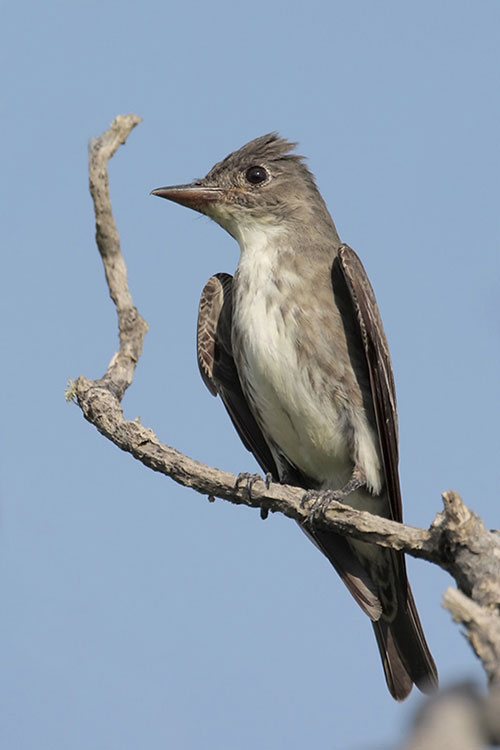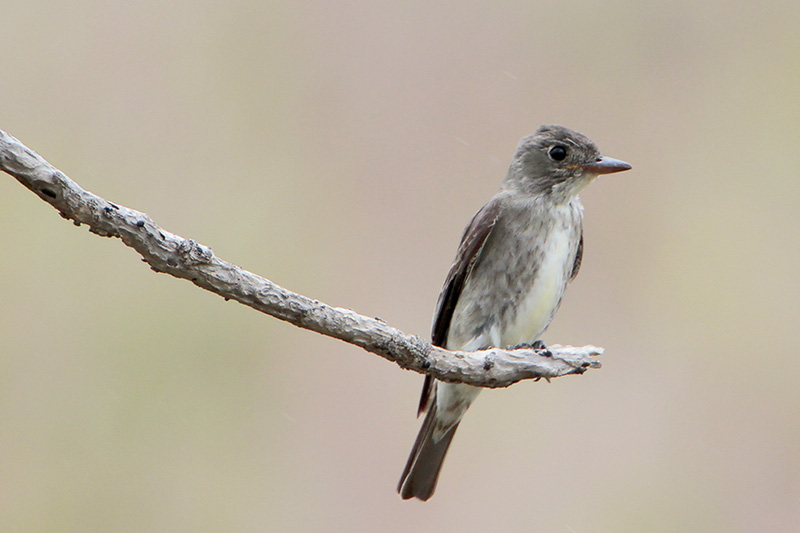The Olive-sided Flycatcher is a long-distance migrant, and its diet preference for flying insects means it has a late spring arrival and an early fall departure. The Olive-sided Flycatcher migrates alone and can be hard to find in migration, although it often sings in spring, so its distinctive song can be a help in locating one.
The Olive-sided Flycatcher is territorial in both the breeding season and in winter, although its breeding territories often overlap with those of other flycatchers. Its nests are only very rarely parasitized by the Brown-headed Cowbird.
On this page
Description of the Olive-sided Flycatcher
BREEDING MALE
The Olive-sided Flycatcher is a large flycatcher prone to perching on the highest point of a tree. It has dark olive upperparts, a dark olive “vest” on the flanks contrasting with a whitish belly, and a long, mostly dark bill.

© Greg Lavaty
Female
Sexes similar.
Seasonal change in appearance
None.
Juvenile
Juveniles are similar.
Habitat
Olive-sided Flycatchers inhabit coniferous forests and clearings, and other woodlands during migration.
Diet
Olive-sided Flycatchers eat flying insects.
Behavior
Olive-sided Flycatchers forage by flycatching from an exposed perch.
Range
Olive-sided Flycatchers breed in the northeastern U.S., west across southern Canada to Alaska, and in western U.S. mountain ranges. They winter in South America. The population has declined in recent decades.
Fun Facts
Olive-sided Flycatchers eat many wasps and bees.
Olive-sided Flycatchers have large territories, and are very aggressive when it comes to nest defense.
Vocalizations
The typical song is a sharp “quick, three beers.”
Similar Species
- Olive-sided Flycatchers are slightly larger than most other flycatchers with which it could be confused, and together with the vested appearance, tendency to perch as high as possible, and distinctive voice, can usually be identified without too much difficulty.
Nesting
The Olive-sided Flycatcher’s nest is a cup of twigs, grasses, and weeds placed on a horizontal branch of widely variable height.
Number: Usually lay 3 eggs.
Color: White or pink with darker markings.
Incubation and fledging:
The young hatch at about 15-17 days and fledge at about 3-4 weeks.


